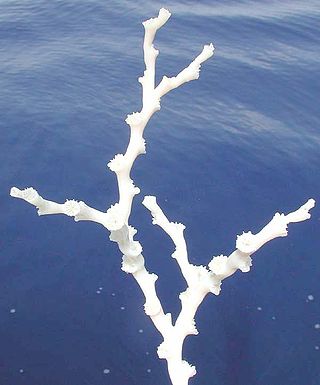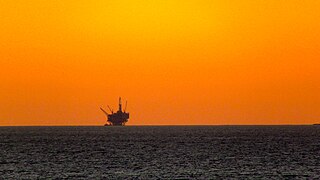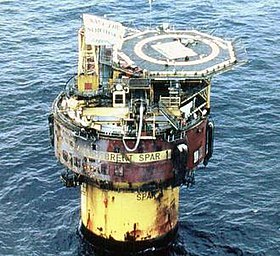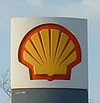
Greenpeace is an independent global campaigning network, founded in Canada in 1971 by a group of environmental activists. Greenpeace states its goal is to "ensure the ability of the Earth to nurture life in all its diversity" and focuses its campaigning on worldwide issues such as climate change, deforestation, overfishing, commercial whaling, genetic engineering, anti-war and anti-nuclear issues. It uses direct action, advocacy, research, and ecotage to achieve its goals.

The International Seabed Authority (ISA) is a Kingston, Jamaica-based intergovernmental body of 167 member states and the European Union established under the 1982 UN Convention on the Law of the Sea (UNCLOS) and its 1994 Agreement on Implementation. The ISA's dual mission is to authorize and control development of mineral related operations in the international seabed considered the "common heritage of all mankind" and also protect the ecosystem of the seabed, ocean floor and subsoil in "The Area" beyond national jurisdiction. The ISA is to safeguard the international deep sea, the waters below 200 meters or 656 feet, where photosynthesis is hampered by inadequate light. Governing approximately half of the total area of the world's oceans, the ISA is to exercise oversight of activities that might threaten biological diversity and harm the marine environment. The Authority operates as an autonomous international organization with its own Assembly, Council and Secretariat.

An oil platform is a large structure with facilities to extract and process petroleum and natural gas that lie in rock formations beneath the seabed. Many oil platforms will also have facilities to accommodate the workers, although it is also common to have a separate accommodation platform linked by bridge to the production platform. Most commonly, oil platforms engage in activities on the continental shelf, though they can also be used in lakes, inshore waters, and inland seas. Depending on the circumstances, the platform may be fixed to the ocean floor, consist of an artificial island, or float. In some arrangements the main facility may have storage facilities for the processed oil. Remote subsea wells may also be connected to a platform by flow lines and by umbilical connections. These sub-sea facilities may include one or more subsea wells or manifold centres for multiple wells.

The Brent field was an oil and gas field located in the East Shetland Basin of the North Sea, 186 kilometres (116 mi) north-east of Lerwick in the Shetland Islands, Scotland, at a water depth of 140 metres (460 ft). The field operated by Shell UK Limited was discovered in 1971 and was once one of the most productive parts of the UK's offshore assets but has reached the stage where production is no longer economically viable. Decommissioning of the Brent field is complete with the exception of Brent C, which is producing from another field. The discovery well 211/26-1 was drilled in 1971 by the semi-submersible drilling rig "Staflo". This was a major surprise at the time as the nearest land in Scotland and Norway is composed of granite and other non reservoir metamorphic rocks.

The seabed is the bottom of the ocean. All floors of the ocean are known as 'seabeds'.

Lophelia pertusa, the only species in the genus Lophelia, is a cold-water coral that grows in the deep waters throughout the North Atlantic ocean, as well as parts of the Caribbean Sea and Alboran Sea. Although L. pertusa reefs are home to a diverse community, the species is extremely slow growing and may be harmed by destructive fishing practices, or oil exploration and extraction.
The Dunlin oilfield is situated 195 km northeast of Lerwick, Shetland, Scotland, in block number 211/23a and 211/24a. It was originally operated by Shell but was sold in 2008 and is now operated by Fairfield Energy and partners MCX.
The Cormorant oilfield is located 161 kilometres (100 mi) north east of Lerwick, Shetland, Scotland. It was discovered in September 1972 at a depth of 150 metres (490 ft). The oil reservoir is located at a depth of 2,895 metres (9,498 ft). Production started in December 1979 from the Cormorant Alpha platform and operates from two platforms and an underwater manifold centre.

Offshore drilling is a mechanical process where a wellbore is drilled below the seabed. It is typically carried out in order to explore for and subsequently extract petroleum that lies in rock formations beneath the seabed. Most commonly, the term is used to describe drilling activities on the continental shelf, though the term can also be applied to drilling in lakes, inshore waters and inland seas.
Throughout its history, the policies and objectives of the non-governmental environmental protection and conservation organization Greenpeace have been criticized by a number of groups, including national governments, members of industry, former Greenpeace members, scientists, political groups, and other environmentalists. The organization's methods, such as the use of direct action, have also led to controversy and legal action.

The Sleipner gas field is a natural gas field in the block 15/9 of the North Sea, about 250 kilometres (160 mi) west of Stavanger, Norway. Two parts of the field are in production, Sleipner West, and Sleipner East (1981). The field produces natural gas and light oil condensates from sandstone structures about 2,500 metres (8,200 ft) below sea level. It is operated by Equinor. The field is named after the steed Sleipnir in Norse mythology.

A spar is a marine structure, used for floating oil/gas platforms. Named after navigation channel Spar buoys, spar platforms were developed as an extreme deepwater alternative to conventional platforms. The deep draft design of spars makes them less affected by wind, wave, and currents and allows for both dry tree and subsea production.

Rigs-to-Reefs (RTR) is the practice of converting decommissioned offshore oil and petroleum rigs into artificial reefs. Such biotic reefs have been created from oil rigs in the United States, Brunei and Malaysia. In the United States, where the practice started and is most common, Rigs-to-Reefs is a nationwide program developed by the former Minerals Management Service (MMS), now Bureau of Safety and Environmental Enforcement (BSEE), of the U.S. Department of the Interior.
George Albert Esson was Assistant Chief Constable of Grampian Police and Chief Constable of Dumfries and Galloway Constabulary (1989-1994). He was at the centre of major inquiries into the Piper Alpha disaster and the 1986 Chinook Helicopter Crash. He also headed the police investigation into the Lockerbie Bombing.

Suction caissons are a form of fixed platform anchor in the form of an open bottomed tube embedded in the sediment and sealed at the top while in use so that lifting forces generate a pressure differential that holds the caisson down. They have a number of advantages over conventional offshore foundations, mainly being quicker to install than deep foundation piles and being easier to remove during decommissioning. Suction caissons are now used extensively worldwide for anchoring large offshore installations, like oil platforms, offshore drillings and accommodation platforms to the seafloor at great depths. In recent years, suction caissons have also seen usage for offshore wind turbines in shallower waters.

The Arctic policy of Russia is the domestic and foreign policy of the Russian Federation with respect to the Russian region of the Arctic. The Russian region of the Arctic is defined in the "Russian Arctic Policy" as all Russian possessions located north of the Arctic Circle. Approximately one-fifth of Russia's landmass is north of the Arctic Circle. Russia is one of five littoral states bordering the Arctic Ocean. As of 2010, out of 4 million inhabitants of the Arctic, roughly 2 million lived in arctic Russia, making it the largest arctic country by population. However, in recent years Russia's Arctic population has been declining at an excessive rate.
From 1946 through 1993, thirteen countries used ocean disposal or ocean dumping as a method to dispose of nuclear/radioactive waste with an approximation of 200,000 tons sourcing mainly from the medical, research and nuclear industry.
This is a list of notable events relating to the environment in 1995. They relate to environmental law, conservation, environmentalism and environmental issues.

Kulluk was an ice-strengthened drill barge that was used for oil exploration in the Arctic waters. She was constructed by Mitsui Engineering & Shipbuilding in Japan in 1983 and operated in the Canadian Arctic until 1993 when she was mothballed for over a decade. In 2005, she was purchased and extensively refurbished by Royal Dutch Shell for drilling off the Alaska North Slope.
Gannet is an oil and gas field located in the United Kingdom's continental shelf in the North Sea. It is 180 km (110 mi) east of Aberdeen, and the water depth at the Gannet offshore installation is 95 m (312 ft). The field is located in Blocks 22/21, 22/25, 22/26 and 21/30. It is half-owned by Royal Dutch Shell (50%) and partly by ExxonMobil (50%) and has been operated by Shell UK Ltd since ‘first oil’ in November 1993. The Gannet A installation is the host platform for subsea tiebacks designated Gannet B to G. Like most Shell fields in the central and northern North Sea the field is named after a sea bird the gannet.















